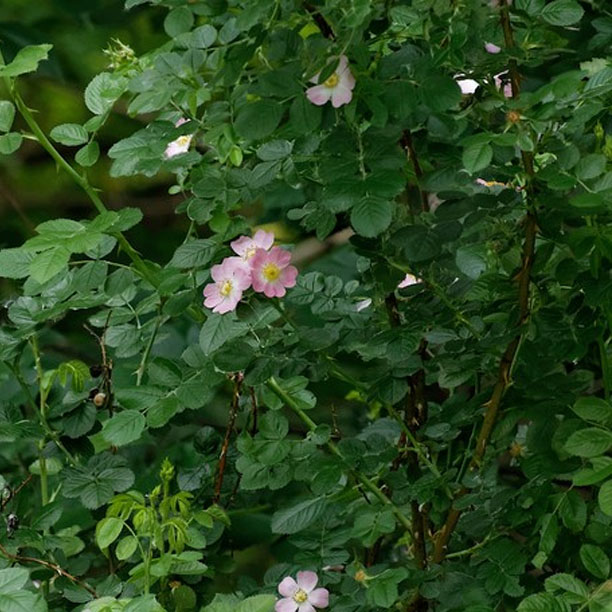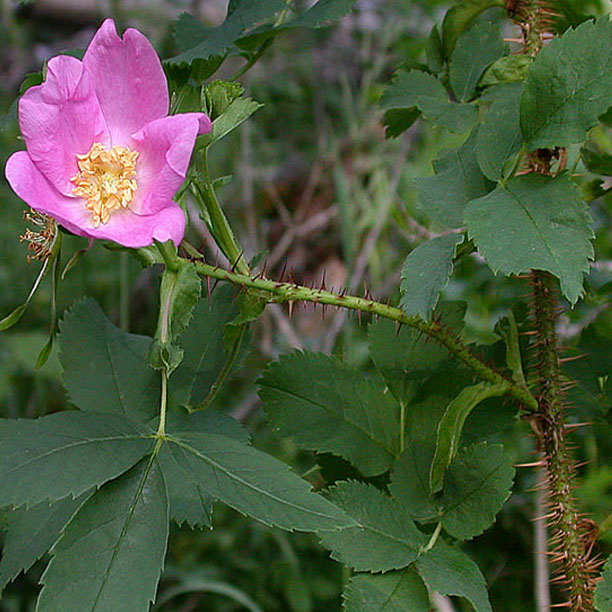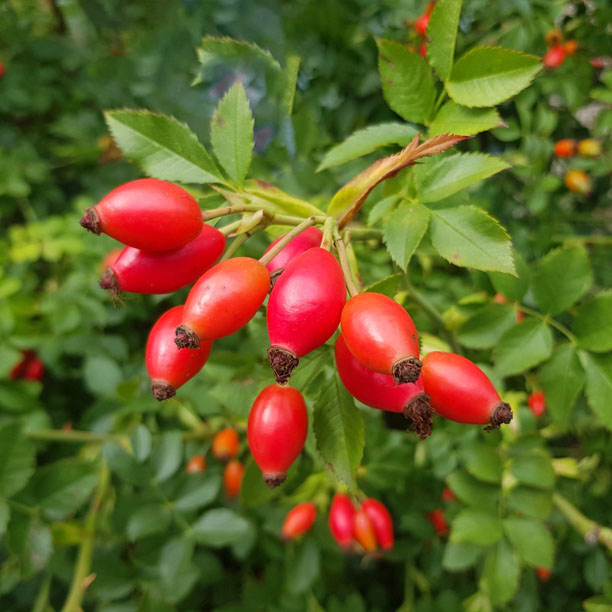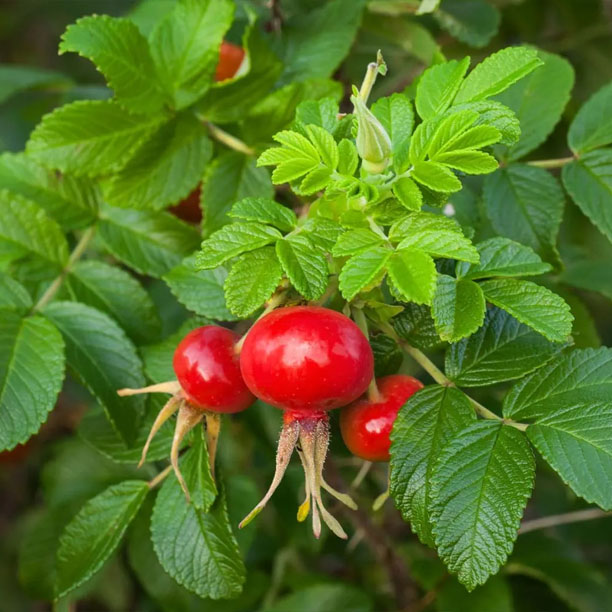Wild Rose
How To Identify
Wild rose plants are a beautiful addition to any field or woodland area but are considered a nuisance by some due to their thorns and thick growth. The wild rose, both in leaf and flower, is normally going to have a much smaller form. Leaves on the wild rose will look similar to a domesticated rose, but normally are much smaller. The leaves will be divided into leaflets with a single stem with three or more smaller leaves branching off the stem. The stem usually will be covered in picky thorns. The flowers can be highly fragrant or even have no fragrance at all and are normally a more relaxed, flat form with five petals. Wild roses, unlike the plants that are hybrids purchased from most nurseries, form thickets with aggressive root systems that defy fire, control erosion and shelter wildlife. Flowering in the spring the rose is easier to find than in the winter when the only identifiable part may be the rose hips left where the flowers once bloomed. Rose hips will vary in size based on variety but are generally a round or oval shape, of orange/red color. Roses are in the same family as apples or crab apples and the rose hips resemble tiny little apples with a similar hairy formation on the bottom.




Benefits
As well as using the leaves and flowers for tea, the wild rose offers vitamins, minerals and fatty acids. It is rich in vitamin C and A, omega-3 and omega-6 fatty acids, organic acids, tannins, flavonoids and pigments. It has antimicrobial properties, reduces inflammation and is high in antioxidants; calms skin irritations, improves hydration and lessens the appearance of fine lines and scars.
How To Find
Wild roses will bloom in spring to summer and will typically grow in fields, disturbed areas, and along woodland edges, roadsides, and trails. Rose hips develop through the summer and change color in autumn and remain on the plant through winter until eaten by an animal or harvested.
Gathering
Gathering the leaves can be done spring to fall. Flowers or flower buds should be picked when fresh and not wilting or discolored. Rose hips are best harvested after all flowers have passed in the autumn to winter.
How To Use
The best use of the wild rose is, in our opinion, as a tea. You can use the parts individually or combined. The leaves and flowers can be picked and used fresh or can be dried and stored for later use.
The outer portion of rose hips can be eaten raw (do not eat the seeds inside the rosehip) or can be boiled and strained for use. They can also be dried whole and used in teas. The rosehips contain the most nutrients of the plant.
Preservation
Preservation of rose petals, buds and rose hips are all possible either air drying, dehydrating or freeze drying.
To preserve the leaves, flowers or hips place them into a paper bag, or on a screen (window screen or similar) and allow them to dry in a dry dark place with good airflow. They can also be dehydrated using very low or no heat in a standard dehydrator or freeze dried. Oven drying isn’t recommended as the heat can damage the medicinal benefits.
Some people make syrups from rose hips and then make jellies as well.